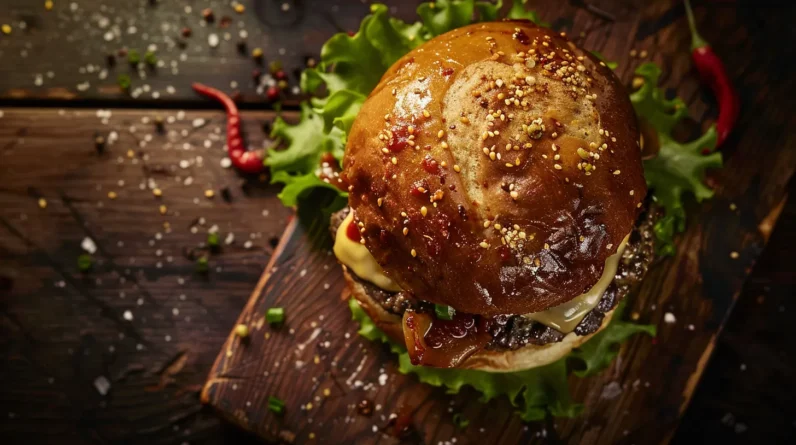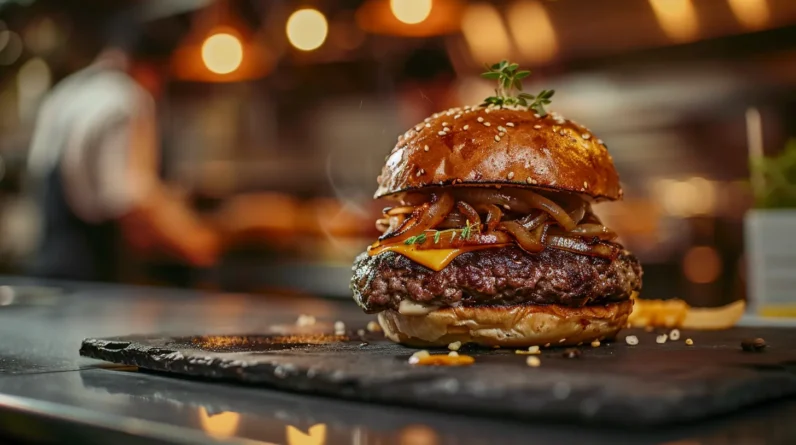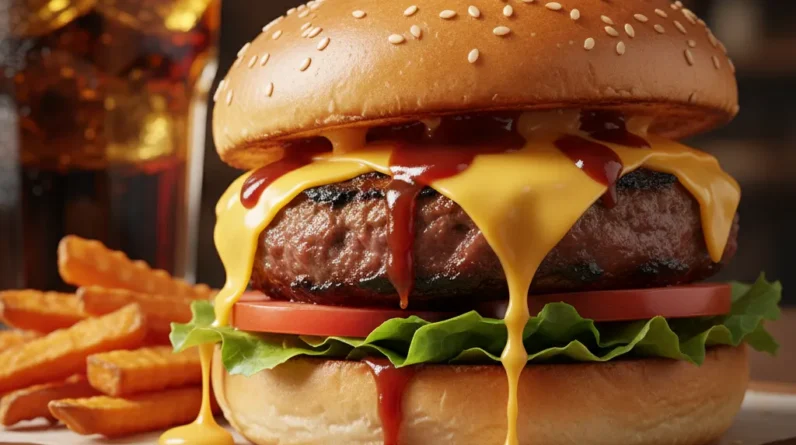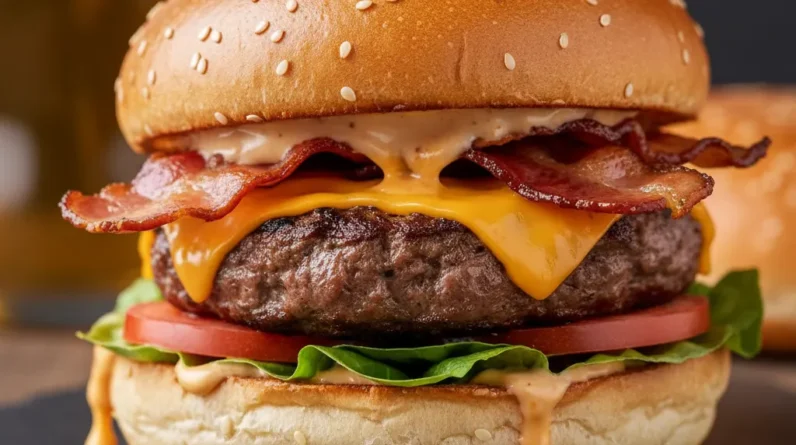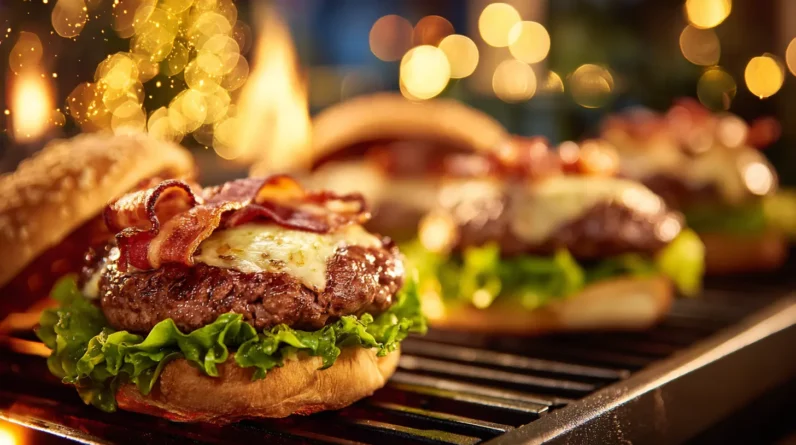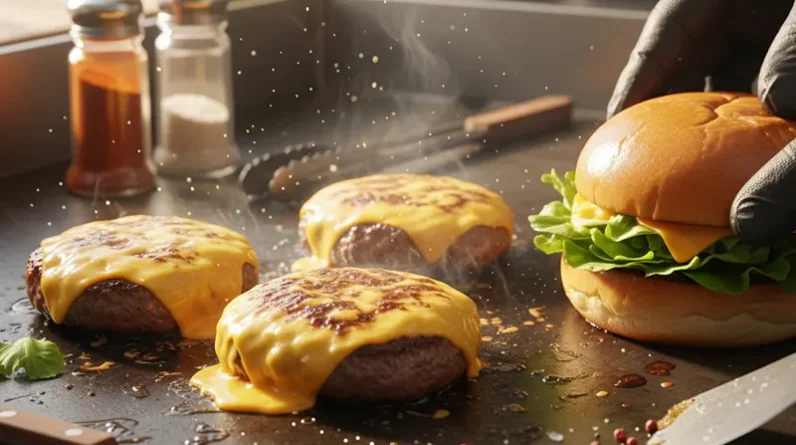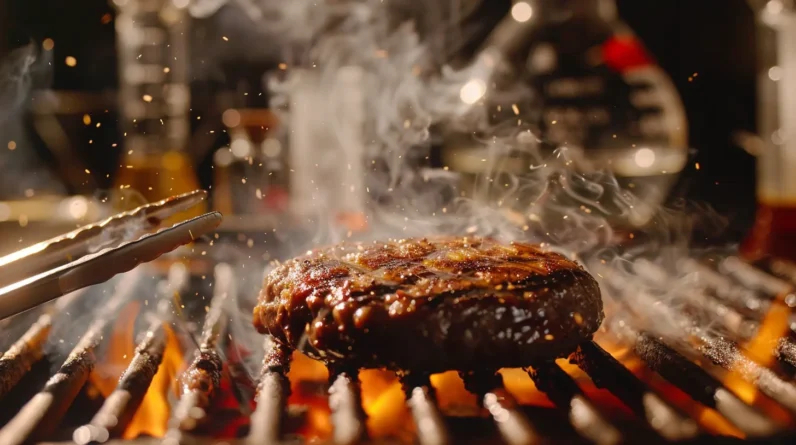
We’ve found that crafting the perfect burger patty is a science-driven process. It starts with selecting ground chuck with 20-25% fat content and coarsely grinding it for ideal texture. We’ll manipulate proteins by adding salt 40 minutes before cooking, enhancing binding and moisture retention. Temperature control is essential, with a target core temperature of 63°C (145°F) for medium-rare. We’ll enhance the Maillard reaction by maintaining surface temperatures between 140°C and 165°C (284°F to 329°F) and managing moisture content. By understanding these principles, we can create juicy, flavorful patties with superior texture. The journey to burger perfection involves mastering each step of this intricate process.
Meat Selection and Composition
The foundation of a perfect burger patty lies in selecting the right meat and achieving an ideal composition. We recommend using ground chuck with a fat content of 20-25% for peak flavor and juiciness. This balance guarantees the patty remains moist during cooking while developing a desirable crust. For enhanced complexity, consider blending different cuts like sirloin or brisket.
The meat’s grind is vital; a coarse grind promotes a looser texture and better mouthfeel. We advise against over-mixing, as this can lead to dense, tough patties. Instead, gently form the meat into patties, creating a slight depression in the center to counteract shrinkage during cooking.
For those seeking perfection, we suggest experimenting with dry-aging the meat before grinding. This process concentrates flavors and enhances the overall taste profile of the burger.
Fat Content and Distribution
Building upon our meat selection principles, we now focus on the key role of fat content and distribution in crafting the perfect burger patty. Ideal fat content ranges from 20% to 30%, striking a balance between flavor and juiciness. We recommend an 80/20 lean-to-fat ratio for most applications. Fat distribution is equally important; uniformly dispersed fat particles create a more consistent texture and flavor profile.
To achieve this, we employ techniques such as grinding the meat twice or using a blend of different cuts. Cold temperatures during processing help maintain fat integrity, preventing smearing and ensuring distinct fat pockets within the patty. These pockets melt during cooking, basting the meat internally and contributing to a juicy, flavorful result. Proper fat content and distribution are essential for achieving the ideal mouthfeel and taste in our burger patties.
Protein Manipulation Techniques
Delving into protein manipulation techniques, we uncover methods to enhance the texture and structure of our burger patties. We’ll focus on two key approaches: salt timing and mechanical manipulation. By adding salt to ground meat at least 40 minutes before cooking, we initiate myosin extraction, leading to a firmer, more cohesive patty. This process, known as salt-soluble protein extraction, improves binding and moisture retention.
Mechanical manipulation involves the controlled working of the meat mixture. We’ll employ techniques such as gentle folding or brief kneading to align protein strands without overworking. This creates a desirable balance between tenderness and structural integrity. Additionally, we’ll explore the impact of temperature on protein behavior, utilizing cold ingredients and equipment to maintain ideal protein flexibility during shaping. These techniques, when applied judiciously, result in patties with superior texture and mouthfeel.
Temperature Control Fundamentals
Temperature control fundamentals play an essential role in achieving the perfect burger patty. We must understand that precise temperature management affects protein denaturation, moisture retention, and overall texture. The Maillard reaction, vital for flavor development, occurs most effectively between 140°C and 165°C (284°F to 329°F). We aim for a core temperature of 63°C (145°F) for medium-rare, ensuring food safety while maintaining juiciness. Thermal gradients within the patty are critical; a reverse sear method can achieve an even doneness. We must also consider carryover cooking, where residual heat continues to cook the burger post-removal from heat. By utilizing temperature probes and infrared thermometers, we can accurately monitor and control these variables. Mastering temperature control allows us to consistently produce burgers with ideal doneness, texture, and flavor profiles.
Maillard Reaction Optimization
The Maillard reaction, introduced in our temperature control discussion, warrants further exploration for ideal burger patty results. To optimize this vital process, we’ll focus on three key factors: temperature, moisture, and pH levels.
We must maintain a surface temperature between 140°C and 165°C (284°F to 329°F) to catalyze the reaction efficiently. We’ll achieve this by preheating our cooking surface adequately and avoiding overcrowding the grill or pan.
We’ll manage moisture content by patting our patties dry before cooking and avoiding excessive flipping, which can release juices prematurely. A slightly drier surface promotes better browning. We’ll consider pH levels. A slightly alkaline environment accelerates the Maillard reaction. We can achieve this by adding a pinch of baking soda to our meat mixture or using high-quality, properly aged beef.
Conclusion
We’ve dissected the burger’s molecular intricacies, yet ironically, the perfect patty remains elusive. Our meticulous analysis of protein structures, fat distributions, and thermal dynamics hasn’t guaranteed culinary nirvana. While we’ve optimized Maillard reactions and manipulated meat compositions, we’re left pondering: does science truly trump instinct? Perhaps the pinnacle of burger perfection lies not in our labs, but in the hands of seasoned grill masters who’ve never heard of myosin fibrils or lipid emulsification.


